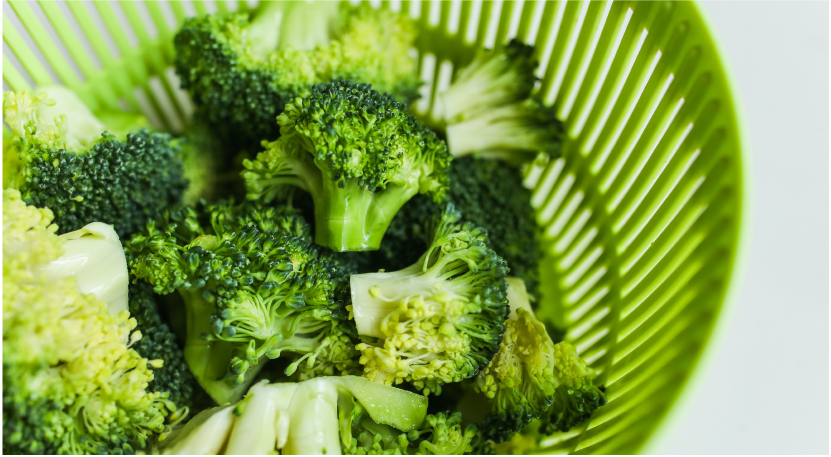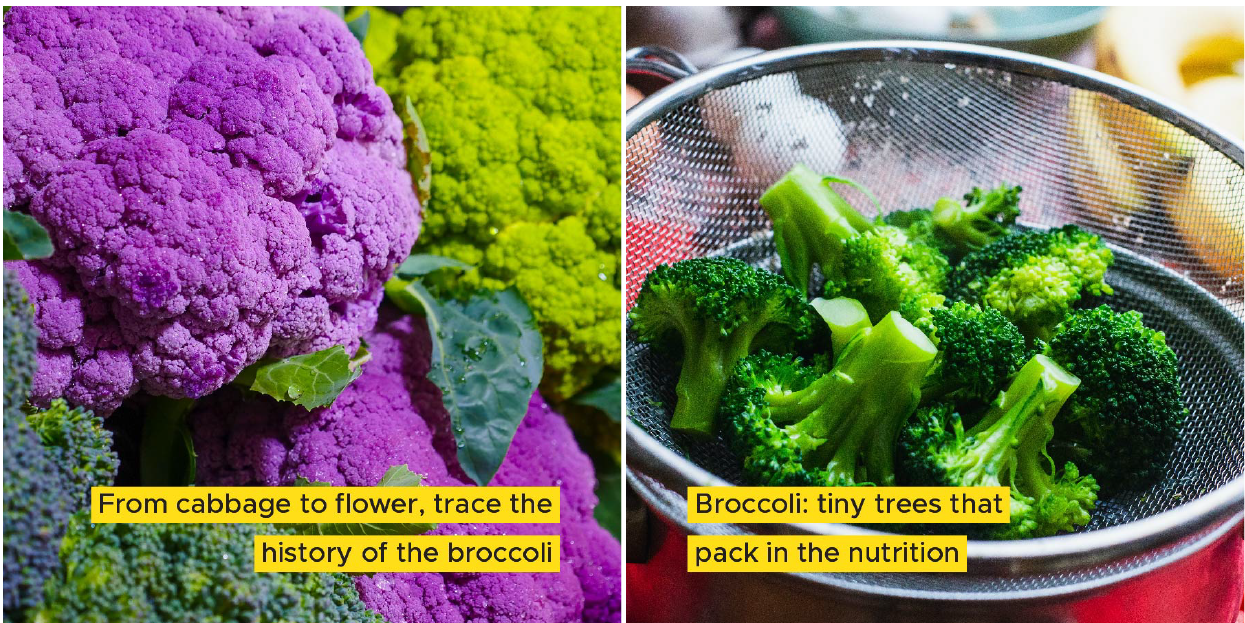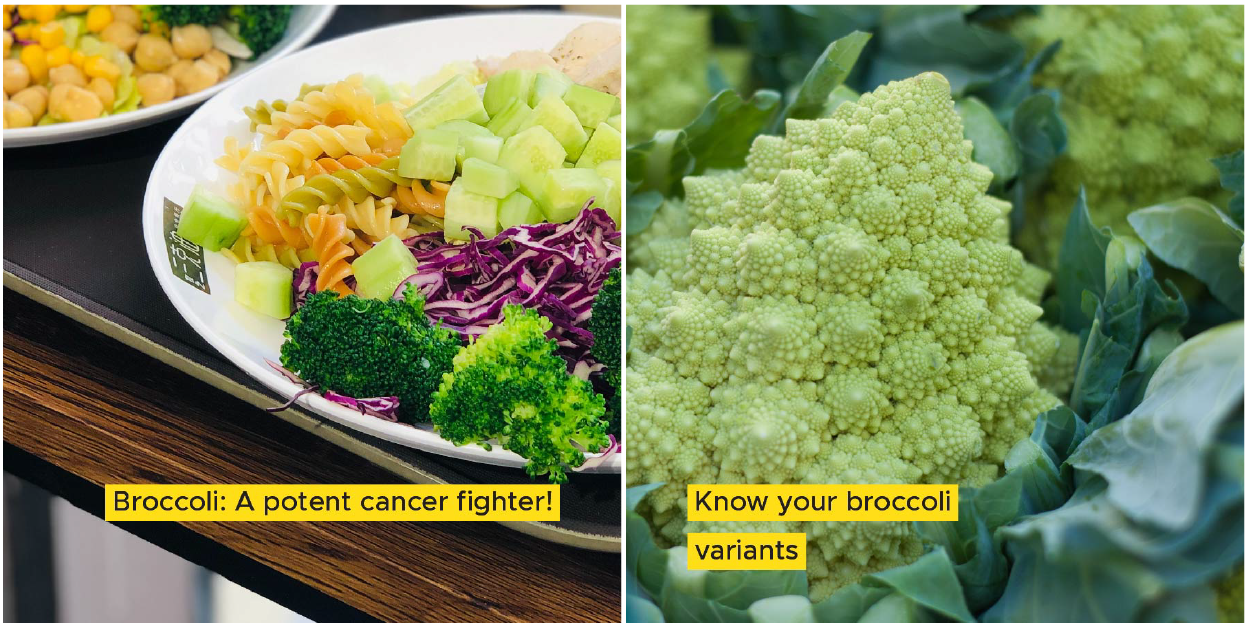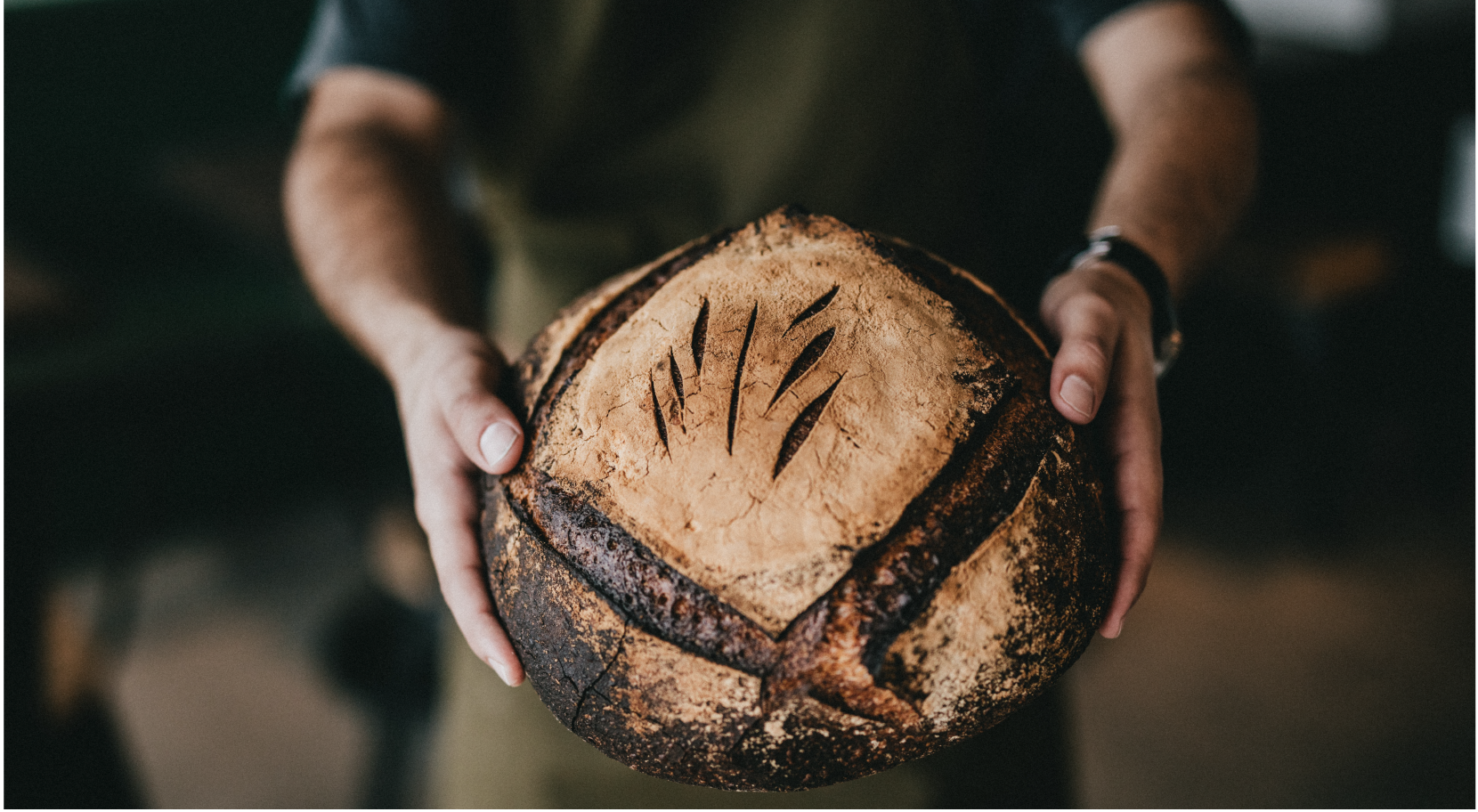Food Feature: Broccoli
Published: 29-Jul-2021 Category: Food Bulletin Newsletter

By Ashok Vasudevan
Broccoli
Love it or hate it, the broccoli is a nutrient superhero that has been highly prized across civilisations!
Essentially a large edible flower, this cruciferous wonder can be found in most grocery aisles and in many cuisines around the world. We look at some of its history, and it’s nutrition today.

History of the broccoli
Native to the Mediterranean, the broccoli started out as a wild cabbage. The ancient Etruscan civilisation - who lived in what is today Tuscany - were considered to be horticultural geniuses and best credited with cultivating and domesticating the broccoli we have today. The Romans also prized it for its taste and nutritional benefits. Served boiled with a mixture of spices, onion and wine, or with creamy sauces, they also used to eat broccoli raw before banquets so their bodies could absorb alcohol better. With the passage of time, the little tree spread from southern Italy towards the rest of Europe and America in the 19th century where it became known as ‘Italian asparagus’.
Broccoli: tiny trees that pack in the nutrition
You will want to include broccoli often in your diet to enjoy its fantastic heath benefits. A 1 cup serving of cooked broccoli is a rich source of almost all vitamins, and minerals like choline, potassium and magenesium, and even omega-3 fatty acids. While it is a nutritionally dense vegetable, be careful not to overcook it which can lead to mushy texture and loss in nutrients. Check out broccoli sprouts as well; these little wonders are usually harvest between 10-14 days of planting, and contain higher concentrations of antioxidants

Broccoli: A potent cancer fighter!
Most research on broccoli have focused on its radical cancer fighting benefits. Apart from its nutritional density, broccoli contains several powerful phytochemicals like sulforaphane and glucosinolate. These compounds aid in reduced inflammation and recent studies show their role in lowering cancer risk. To enjoy these benefits, it is best to eat broccoli raw as cooking locks in the phytochemicals, making it unavailable to the body.
Know your broccolis
Kai Lan - best known as the Chinese broccoli, or Chinese Kale, historians believe that this plant was cultivated from cabbages that were brought to Asia by early Portuguese explorers. Kai Lan has a noticeably more bitter taste than broccoli, and its leaves are thicker, flatter and a distinct glossy blue-green.
Broccolini - actually a cross between the broccoli and the Kai Lan, the broccolini has long slender stalks with clusters of buds at the tip. Sweeter and with overtones of mustard, the stalks are less fibrous than broccoli and don’t require peeling.
Romanesco - Also called a Roman cauliflower or broccoli, this is a close cousin of the broccoli, but not actually derived from the broccoli. In terms of taste and texture, it is closer to the cauliflower, but may have a slightly nuttier, milder flavour. However, it also has a more tender texture and can be overcooked easily. Despite the name the Romanesco
Broccoli Raab (Rapini/Rabe) - technically a closer cousin to the turnip, the Rabe is best known for its sharp bitter edge and earthiness.
In general, the greener the plant, the better it is. Yellowing florets or soft stems indicate that it is no longer fresh. Enjoy these broccolis steamed, broiled, roasted, grilled or even raw!
Love it or hate it, the broccoli is a nutrient superhero that has been highly prized across civilisations!
Essentially a large edible flower, this cruciferous wonder can be found in most grocery aisles and in many cuisines around the world. We look at some of its history, and it’s nutrition today.

History of the broccoli
Native to the Mediterranean, the broccoli started out as a wild cabbage. The ancient Etruscan civilisation - who lived in what is today Tuscany - were considered to be horticultural geniuses and best credited with cultivating and domesticating the broccoli we have today. The Romans also prized it for its taste and nutritional benefits. Served boiled with a mixture of spices, onion and wine, or with creamy sauces, they also used to eat broccoli raw before banquets so their bodies could absorb alcohol better. With the passage of time, the little tree spread from southern Italy towards the rest of Europe and America in the 19th century where it became known as ‘Italian asparagus’.
Broccoli: tiny trees that pack in the nutrition
You will want to include broccoli often in your diet to enjoy its fantastic heath benefits. A 1 cup serving of cooked broccoli is a rich source of almost all vitamins, and minerals like choline, potassium and magenesium, and even omega-3 fatty acids. While it is a nutritionally dense vegetable, be careful not to overcook it which can lead to mushy texture and loss in nutrients. Check out broccoli sprouts as well; these little wonders are usually harvest between 10-14 days of planting, and contain higher concentrations of antioxidants

Broccoli: A potent cancer fighter!
Most research on broccoli have focused on its radical cancer fighting benefits. Apart from its nutritional density, broccoli contains several powerful phytochemicals like sulforaphane and glucosinolate. These compounds aid in reduced inflammation and recent studies show their role in lowering cancer risk. To enjoy these benefits, it is best to eat broccoli raw as cooking locks in the phytochemicals, making it unavailable to the body.
Know your broccolis
Kai Lan - best known as the Chinese broccoli, or Chinese Kale, historians believe that this plant was cultivated from cabbages that were brought to Asia by early Portuguese explorers. Kai Lan has a noticeably more bitter taste than broccoli, and its leaves are thicker, flatter and a distinct glossy blue-green.
Broccolini - actually a cross between the broccoli and the Kai Lan, the broccolini has long slender stalks with clusters of buds at the tip. Sweeter and with overtones of mustard, the stalks are less fibrous than broccoli and don’t require peeling.
Romanesco - Also called a Roman cauliflower or broccoli, this is a close cousin of the broccoli, but not actually derived from the broccoli. In terms of taste and texture, it is closer to the cauliflower, but may have a slightly nuttier, milder flavour. However, it also has a more tender texture and can be overcooked easily. Despite the name the Romanesco
Broccoli Raab (Rapini/Rabe) - technically a closer cousin to the turnip, the Rabe is best known for its sharp bitter edge and earthiness.
In general, the greener the plant, the better it is. Yellowing florets or soft stems indicate that it is no longer fresh. Enjoy these broccolis steamed, broiled, roasted, grilled or even raw!

